Throughout history, humans have gazed up at the sky and pondered the mysteries that lie beyond the clouds. As scientific advancements and technological progress have been made, scientists have gradually been able to uncover and study distant planets. In this article, we will provide you with some valuable insights in this field. This information will be particularly beneficial for children who are just starting to explore the world around them. Additionally, we hope that our article will assist students in their preparation for reports on this fascinating topic.
How many planets make up the solar system?
As of now, it is officially recognized that there are eight planets within the solar system. This classification has been in place since 2006, when scientists determined that one celestial body, namely Pluto, could no longer be considered a planet. However, there is still no unanimous agreement among scientists, leaving the question of whether the solar system has nine or eight planets unanswered.
In order to determine which celestial bodies can be classified as planets, scientists have established the following criteria:
- All planets have an orbit and revolve around the Sun.
- The shape of the planets is round or nearly round, a result of gravitational forces.
- Planets must have cleared their orbit of other objects, only allowing smaller satellites to be in close proximity.
Additionally, it is not necessary for a planet to be a satellite itself.
The term “planet” originates from the ancient Greek language and translates to “wanderer”. In ancient times, these celestial bodies were often referred to as “wandering stars”, a more fitting description. From that point on, they have been commonly known as planets.
The order of the planets in the solar system
Scientists estimate that our solar system has been in existence for approximately 4.5 billion years. The Sun, located at the center, is responsible for sustaining life on Earth.
Now, let’s arrange the planets in the solar system according to their proximity to the Sun:
- Mercury – This planet is the closest to the Sun and experiences heat only on one side, resulting in extreme temperature differences between its halves.
- Venus – Following Mercury, Venus is the second closest planet to the Sun. Its atmosphere primarily consists of carbon dioxide, making it uninhabitable and extremely hot.
- Earth – Our home planet, Earth, is the third planet from the Sun and the only known celestial body to harbor life.
- Mars – Although Mars lacks oxygen and water, scientists believe that there may have been life on the planet in the past.
- Jupiter – Jupiter is a giant gas planet known for its powerful storms and high-speed winds on its surface.
- Saturn – Saturn has always been a fascinating planet for astronomers due to its unique beauty, with its prominent ring made up of cosmic ice formations.
- Uranus – Uranus is a planet known for its unusual tilt and magnetic field, which is 10 times stronger in the northern hemisphere than in the southern hemisphere, giving it a rolling ball-like appearance.
- Neptune – Neptune, the farthest planet from our sun, is known for its extremely cold temperatures and constant strong winds.
Pluto, the farthest from the Sun and currently excluded from the list of planets in the solar system, ranks last.
The primary characteristics of the Earth group planets
The planets of the solar system are categorized into two groups: terrestrial and gas giants.
The terrestrial group consists of celestial bodies that are closer to the Sun – at the first level, according to scientists, and are considered inner (rocky). They possess a solid surface layer and are composed of metal or silicate rocks. In addition to Earth, the group includes: Mercury, Venus, Mars.
All of these planets have approximately the same size and structure. Each planet has a crust, mantle, and core. It is worth mentioning that Mercury, one of the planets in the Earth group, has a thin upper layer unlike the others. This is due to two impacts from unknown space objects that are similar in size to Mercury. The first impact caused Mercury to almost melt, and the second impact resulted in most of its crust being blown away.
What other similarities do the planets in the Earth group share:
- They have a similar composition of chemical elements. These planets are composed of hard rocks, minerals, and metals, including significant amounts of iron and silicon compounds.
- The planets differ in their atmospheric characteristics, ranging from those with higher densities to those with lower densities. For instance, while Mercury has an almost negligible atmosphere, Venus and Mars have relatively dense atmospheres that contain water vapor and carbon dioxide, resembling Earth’s gas shell.
- Some planets have few or no satellites, such as Earth, which only has the Moon, and Mars, which has small satellites.
- Impact from celestial bodies has resulted in the formation of craters, depressions, and volcanoes on the surface of the planets.
Furthermore, it is worth mentioning that all planets share the common characteristic of rotating around their own axis and around the Sun, with some also acting as satellites themselves.
The celestial bodies situated between Mars and Jupiter, known as the external planets, lie beyond the cosmic zone’s asteroid belt. These planets are distinct due to their immense size compared to those in the Earth group and the absence of solid surfaces. This group includes Jupiter, Saturn, Uranus, and Neptune. Giant planets possess either rings or a significant number of satellites. Additionally, they serve as protective barriers against meteorite impacts on Earth.
Key Features of Giant Planets:
- Enormous mass, surpassing that of other celestial objects. For instance, Jupiter’s mass exceeds Earth’s by 318 times, while Neptune’s exceeds it by 17 times.
- The rotational periods of giant planets are faster than those of other planets, ranging from 10 to 17 hours. Moreover, their equatorial regions rotate at a faster pace than their polar regions.
- To pass through its orbit and complete one revolution, for instance, Neptune requires 164 years or more, while Jupiter takes 12 years.
- Due to their rapid rotation, the gas giants experience significant shrinkage, as observed by scientists.
- Their considerable distance from the Sun results in extremely low temperatures that remain consistent throughout the year, unaffected by seasons.
- One fascinating fact about these planets is that the change in seasons is determined by the planet’s axial tilt, or its inclination to the orbital plane. When the axis is almost perpendicular, the change in seasons is minimal, whereas with a perpendicular position, there is no change in seasons at all.
- The gas giants possess a gaseous structure within a robust atmosphere, hindering scientists’ ability to thoroughly study the region beneath the gas cloud.
- These planets exhibit low density, making them relatively light considering their size.
- The giants’ chemical composition deviates significantly from other planets that possess a lithosphere.
All gas giants have satellites – Jupiter has 79, Neptune has 17, Uranus has 27, and Saturn has 62. Additionally, these planets are adorned with rings.
Due to their rapid rotation, the planets generate a powerful magnetic field, resulting in the presence of radiation belts encircling the giants, spanning millions of kilometers.
Analysis of the planets in our solar system
Our solar system comprises of various celestial bodies, such as planets, satellites, comets, asteroids, dust, gas, and other small particles, in addition to the mighty Sun. Due to the Sun’s gravitational pull, all these objects revolve around it. In total, there are 8 planets in our solar system, arranged in the following order based on their distance from the Sun: Mercury, Venus, Earth, Mars, Jupiter, Saturn, Uranus, and Neptune. Previously, scientists considered Pluto as a planet, but as our understanding of science advanced, we established certain characteristics that Pluto did not possess. Consequently, in 2006, it was no longer classified as a planet and was removed from the official list.
These planets are classified into two groups. The first group, known as the terrestrial planets, includes Venus, Mercury, Mars, and our very own Earth. These planets are characterized by their relatively small size, solid surface, and either no satellites or very few satellites. Amongst these planets, Earth is the largest in terms of size and complexity.
The second category consists of the planets Neptune, Uranus, Saturn, and Jupiter, collectively known as the giants. Unlike other planets, these giants lack a solid surface and are predominantly composed of gas. Additionally, all giants have numerous satellites, some of which are quite large.
Planets belonging to the terrestrial group:
- Mercury – Among the other planets, Mercury is the smallest and closest to the Sun, completing one revolution in just 88 days. Its weight is significantly less than that of Earth, being 20 times lighter. The planet lacks an atmosphere, resulting in extreme temperatures, with extremely cold nights and scorching hot days. Mercury’s surface is covered in craters, some of which are over a kilometer wide.
- Venus has a dense atmosphere filled with toxic gases that stretch more than 100 kilometers into the sky. It is the second planet from the Sun, coming after Mercury. With temperatures exceeding 500 degrees Celsius, Venus is incredibly hot. It lacks any natural satellites. Among the celestial bodies in our solar system, Venus is the third brightest, following the Moon and the Sun. Due to its slow rotation, a day on Venus lasts 243 Earth days, while a year lasts 225 Earth days.
- Mars is the fourth planet from the Sun, situated after Earth. It is well-known for its distinctive red color, which is a result of the high concentration of iron oxide in its soil. Mars has two satellites, Deimos and Phobos. Unlike Earth, a day on Mars lasts 24 hours, but a year is 668 days long, twice as long as on our planet. Mars bears resemblance to Earth in several ways, including the presence of seasons, a thin layer of atmosphere, and the possibility of water (although this is only speculative).
- Jupiter, which is known as the largest celestial body, possesses a set of rings composed of cosmic debris, totaling to 5 rings. It is worth mentioning that this planet boasts a staggering number of over 60 natural satellites. In terms of mass, Jupiter surpasses Earth by a factor of approximately 300 and has a radius of 11 times that of our home planet. When considering the combined weight of all the other planets, it becomes evident that they are a mere 2.5 times lighter than the colossal Jupiter. Despite its gargantuan proportions, Jupiter completes a full rotation on its axis in a mere 10 hours, while it takes 12 Earth years for it to complete a revolution around the Sun.
- Saturn can be observed from Earth without the need for any optical aids, and its rings, which are composed of ice and dust particles, can be viewed through a telescope. The planet boasts a remarkable number of satellites, exceeding 60 in total, with one of them being larger than the planet Mercury. Saturn is characterized by its polar compression and equatorial expansion, leading to a rapid rotational speed. In fact, a single day on Saturn is equivalent to only 10 Earth hours, while a single year extends for a period of 30 Earth years.
- Uranus stands out from the other planets due to its unique characteristic – its axis is tilted at an angle of 98 degrees. This peculiar tilt causes the South and North Poles to experience alternating periods of illumination, each lasting for a remarkable 42 years. Scientists have put forward a hypothesis that this unusual tilt could be the result of a collision with a mysterious celestial object, which has set Uranus off on its distinctive trajectory. The composition of Uranus is predominantly made up of a mixture of gases, which transition into liquid form as one delves deeper into the planet’s depths, reaching a recorded depth of over 8,000 kilometers. The lowest temperature ever recorded on Uranus stands at a bone-chilling 224 degrees Celsius below zero. In addition to its intriguing characteristics, Uranus also possesses an impressive collection of 27 satellites and 13 rings.
- Neptune is the furthest planet from the Sun in our solar system. It is worth noting that this planet was actually discovered through mathematical calculations and not by observing it through a telescope. Neptune is a planet that is quite large and dense, and it receives significantly less sunlight than Earth, about 400 times less to be precise. As a result, the climate on Neptune is always extremely cold and the planet is in a perpetual state of twilight. It takes Neptune 164 years to complete one orbit around the Sun, and it is interesting to note that since its discovery in 1846, it has only completed one full orbit. Additionally, a day on Neptune lasts for 16 hours.
Watch the video: “Astronomy for kids. Discovering the Planets in our Solar System.”
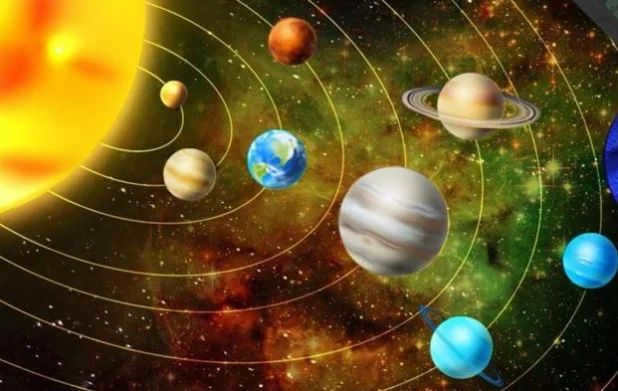
When it comes to the vastness of the universe, the solar system is just a tiny fraction. For countless years, scientists have dedicated their efforts to studying this intriguing system, delving into the mysteries of celestial bodies and launching spacecraft into the depths of space. Within the expanse of the solar system, one can find an array of captivating entities such as planets, satellites, comets, meteors, asteroids, and other celestial wonders. The one unifying factor among these cosmic marvels is their orbit around the radiant Sun.

In today’s fast-paced society, simply relying on the traditional school curriculum is no longer sufficient. It is crucial to gain valuable knowledge and insights about finance and investments in order to safeguard your financial well-being.
Take charge of your future by expanding your understanding and capabilities in financial literacy. Discover the world of online FINANCIAL LITERACY today.

Register now and celebrate your achievements!
The Structure of the Solar System
The prevailing theory on the origin of the solar system suggests that it formed approximately 13 billion years ago from a cloud of dust and debris. At the center of the solar system lies the Sun, the sole star. All other celestial bodies revolve around it. The solar system itself orbits the core of the Milky Way Galaxy, of which it is a part. This rotation occurs at a speed of 250 kilometers per second. A complete revolution takes one galactic year, equivalent to 225 million Earth years.
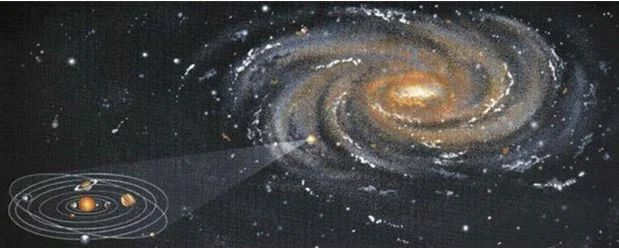

The star contains 99.87% of the total mass of the solar system. Its size is so enormous that its diameter (11 million 392 thousand 20 km) is ten times larger than the diameter of the largest planet in the system, Jupiter. The Sun, also known as the Earth’s Luminary, is an average star that is capable of shining on its own due to its high temperature.
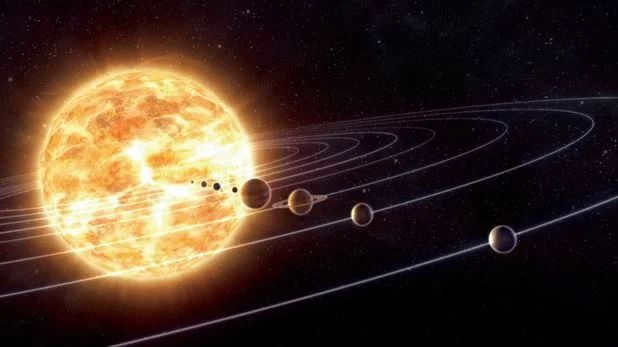
Aside from the Sun, the Solar System is composed of various planets. These celestial bodies are solid in nature and are characterized by their cold temperatures. Unlike the Sun, these planets do not emit light but rather reflect the illumination from the Sun.
The Solar System is comprised of a total of 8 main planets, all of which play a significant role in this cosmic system:
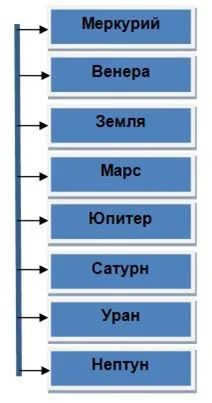
There are two main groups in which all the planets of the Solar System can be divided.
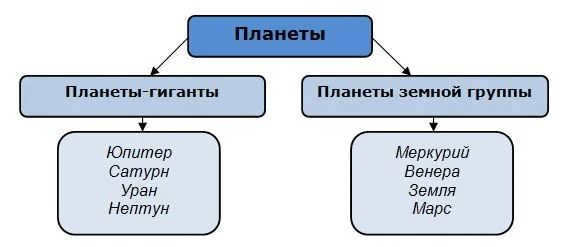
Pluto is another fascinating entity within the Solar System. It was originally classified as the 9th planet of the System, but later reclassified as a “dwarf” after refined parameters were obtained. Astronomers have suggested the existence of another planet in the solar system, located on the outskirts approximately 90 billion kilometers away from the Sun. This hypothetical planet takes 10-20 thousand years to complete one revolution around the Sun. However, this theory has yet to be substantiated.
The majority of large celestial bodies within the solar system orbit the Sun within the same plane, known as the ecliptic plane.
The solar system also includes smaller celestial bodies:
- The Kuiper Belt is the largest belt of fragments. The objects in this region consist mainly of ice. The most prominent bodies within the belt are Kvavar, Ork, and Varuna. Once their characteristics are better defined, they may be classified as dwarf planets.
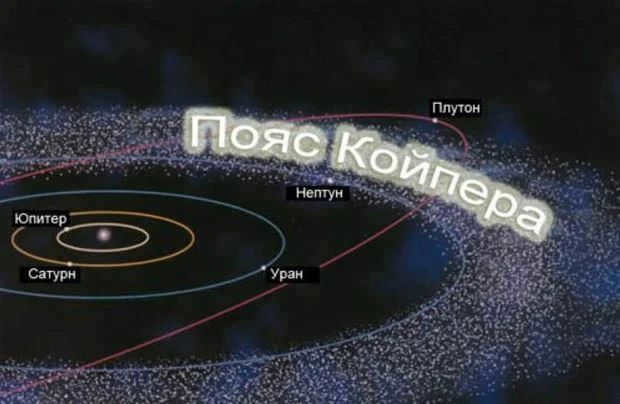
- Asteroids are the most common objects in space. They can be found in a belt located between Jupiter and Mars. Some theories suggest that asteroids are remnants from the formation of the solar system. Due to the strong gravitational force of Jupiter, these asteroids were not able to merge together to form larger celestial bodies. Two of the largest asteroids in this belt are Vesta and Hygeia. Although there are several hundred thousand, and possibly even millions, of asteroids with a diameter of over 1 km in this belt, their total mass is less than 0.001 times the mass of the Earth.
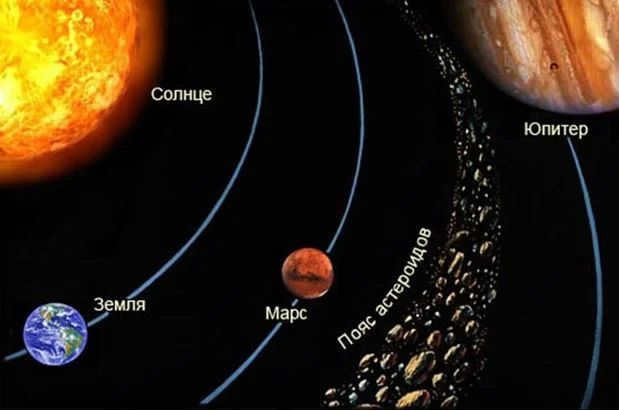
- Meteors and meteorites are among the tiniest celestial objects. From time to time, they descend into the Earth’s atmosphere. While they are descending, they are referred to as meteors. Once they collide with the Earth, they become meteorites.
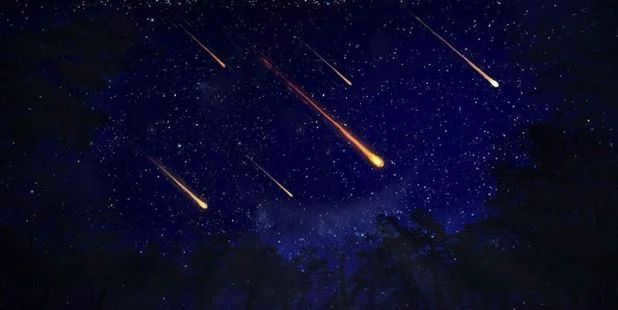
- Comets, which are named after the Greek word for “long-haired,” have a unique feature. When they approach the Sun, they develop a tail that can stretch for hundreds of millions of kilometers. This tail is formed by the gases that gradually vaporize from the comet. The head of the comet is made up of two parts – the nucleus and the coma. The nucleus is a block of ice containing gases, silicates, and tiny particles of metals. Surrounding the nucleus is the coma, which is a cluster of gases and dust.
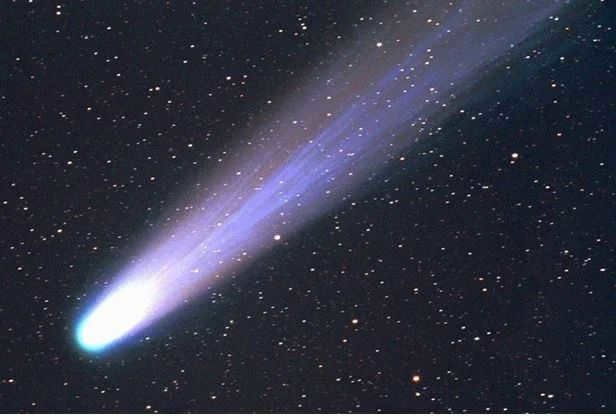
As scientists delve into the composition and structure of the solar system, determining its exact boundaries remains a complex task. Two key factors come into play:
- The solar wind, which consists of charged particles flowing from the Sun’s uppermost and hottest layer;
- The gravitational force exerted by the Sun, known as solar gravity, which keeps celestial bodies in their respective orbits.
The outermost limit of the solar wind is referred to as the heliopause, where it encounters interstellar matter and eventually merges with it.
Distinguishing the Earth-group planets from the giant planets
Let’s explore the contrasts between the Earth-group planets and the giant planets:
- Size and mass. The term “giants” itself implies that the celestial bodies in this category are significantly larger. The smallest giant planet, Neptune, has a radius four times greater than Earth’s. To put it in perspective, Earth’s radius is 6371 km, while Neptune’s is 24622 km. Jupiter holds the title for being the largest planet in the Solar System, with a radius of 69,911 thousand kilometers and a mass of 1.9*1027 kg. In terms of mass, it is 318 times greater than Earth.
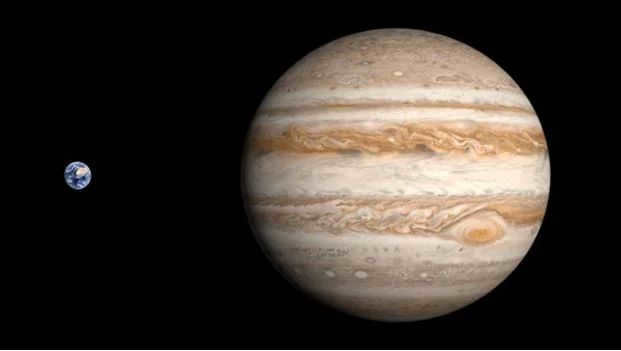
Comparing the sizes of Earth and Jupiter
- One major distinction between the Earth and Jupiter is the absence of a solid surface on Jupiter. Jupiter is known as a “gas giant” because it is composed mostly of gases. As you move towards the center of the planet, the atmosphere becomes denser and the gases transition into a liquid state. However, there is no clear boundary between the atmosphere and the ocean of Jupiter. It is believed that metallic hydrogen is concentrated beneath the ocean, with a solid core lying deeper.
- Terrestrial planets, like Mars and Earth, have small satellites. Mars has two satellites, Earth has one, and the remaining planets in this group have no satellites at all. On the other hand, gas giants have numerous large satellites. Saturn holds the record for the most satellites with a total of 82. Interestingly, both Jupiter’s satellite Ganymede and Saturn’s Titan are larger in size than Mercury.
- It is worth mentioning that only the gas giants possess a system of rings. The rings of Saturn were first discovered in the 17th century, while the existence of other ring systems was not confirmed until the latter half of the 20th century.
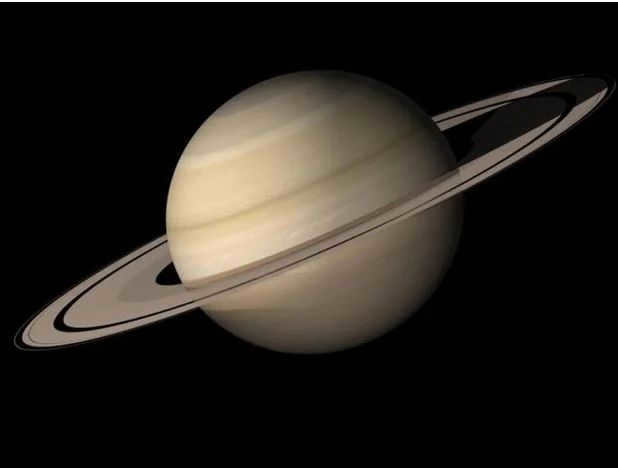
Saturn
- The density of the giant planets is significantly lower. This is because they are composed mostly of gas. Saturn’s density is 1.5 times less than that of water.
The Oort cloud of comets and the Kuiper Belt.
Cosmic icy objects on the outskirts of the solar system come together to form the Kuiper Belt. It can be observed beyond Neptune’s orbit. It bears a resemblance to the asteroid belt, but its size is much larger. The objects in the Kuiper Belt are remnants from the formation of the Solar System. Due to the gravitational force of Neptune, they were unable to form into large planets.
The largest objects in the Kuiper Belt:
Currently, the Belt is an object that has been relatively understudied. In 2006, the New Horizons probe was launched with the purpose of exploring it. By 2015, the probe had successfully reached Pluto and is now in the process of continuing its journey to uncover new objects.
For countless millennia, humanity has been observing comets. As these comets approached the Sun, their icy exteriors gradually began to evaporate. This led scientists to conclude that comets must have originally existed at a significant distance from the star. Over time, these observations led to the hypothesis that there is a large cloud, known as the Oort Cloud, beyond the orbits of the planets. This cloud is believed to contain cosmic bodies composed of rock and ice. Despite advancements in technology and scientific capabilities, the Oort Cloud remains unobservable, existing only in theory.
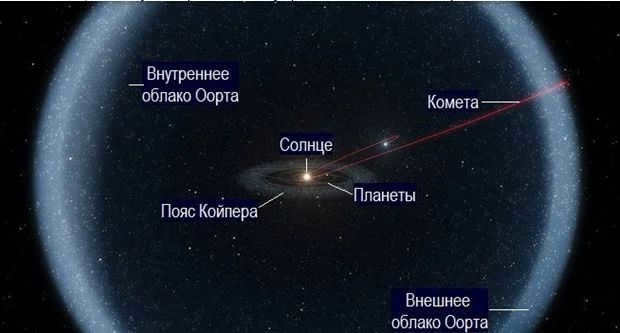
The dimensions of the celestial bodies in the solar system
The Sun, being the largest celestial body in the solar system, rightfully holds this title. Its radiance is so powerful and luminous that it has the ability to illuminate even the distant Pluto. It is thanks to the Sun’s rays that life forms have emerged on Earth. However, it is widely believed that the Sun is not immortal and in the future, it has the potential to annihilate all living beings. Scientists have estimated that the Sun’s energy will last for another 4-6 billion years.
Jupiter, the biggest planet in the solar system, has a mass that is 2.5 times greater than the combined mass of the other planets. This colossal celestial body holds numerous enigmas, and scientists are yet to ascertain whether it possesses a solid core. The Great Red Spot, a phenomenon widely known amongst the masses, is believed to be three times the size of Earth. Researchers tend to believe that this tempest has been raging on Jupiter’s surface for several centuries.
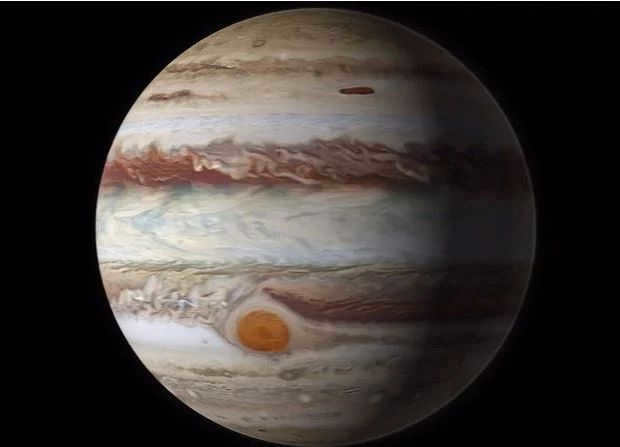

The solar system comprises various celestial bodies, with Earth being the largest solid one. Among the planets in the Earth group, it stands out as the largest, measuring approximately 12,700 kilometers in diameter.
Jupiter’s natural satellite, Ganymede, holds the title for the largest in the system. With a diameter of 5,300 kilometers, it surpasses the size of Mercury.
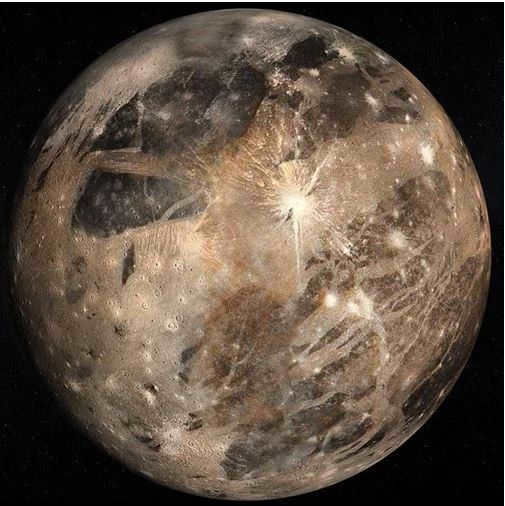
The largest dwarf planet is Pluto. The New Horizons probe conducted a study on it in 2015. The research revealed that the celestial body has a radius of 2380 km, which is slightly larger than the previous estimates by several tens of kilometers.
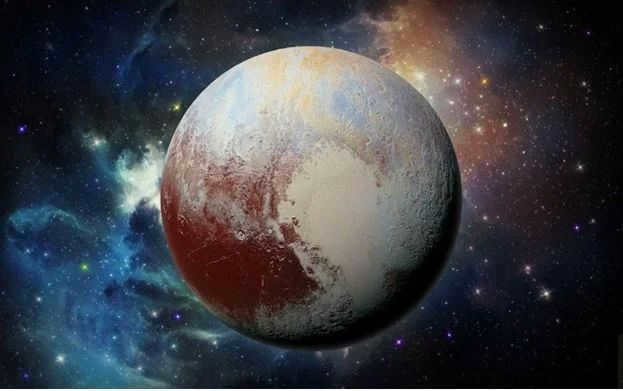
Vesta, the largest asteroid in our solar system, boasts a diameter of approximately 525 km. However, its shape is far from spherical. Some might argue that this isn’t particularly impressive. Yet, if we consider the fact that a mere 10 km asteroid once collided with Earth, causing widespread devastation and wiping out countless life forms, a celestial body with a diameter of 525 km becomes significantly more significant. Often referred to as a protoplanet, Vesta is believed to have had the potential to develop into a rocky planet during the early stages of the solar system’s formation. However, due to the gravitational forces exerted by Jupiter and a lack of sufficient matter, this transformation never transpired.
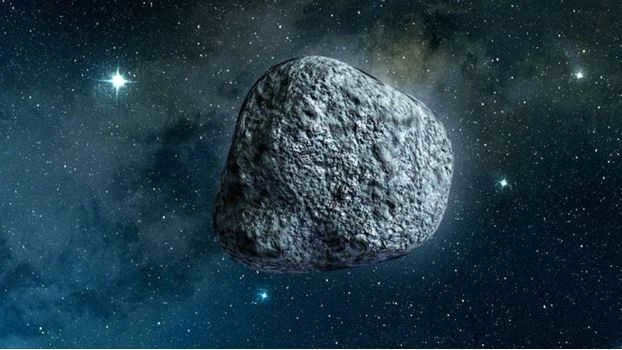
The structure, dimensions, and terrain of the Earth
The Earth’s sphere is positioned as the third celestial body in distance from the Sun. As of now, it remains the sole planet known to support life forms. Its estimated age is approximately 4.5 billion years. Roughly 3.8 billion years ago, the Earth witnessed intense volcanic eruptions, powerful gusts of wind, and torrential downpours. These environmental factors played a crucial role in the formation of the initial landmasses and bodies of water. The earliest forms of life emerged around 2.5 billion years ago.
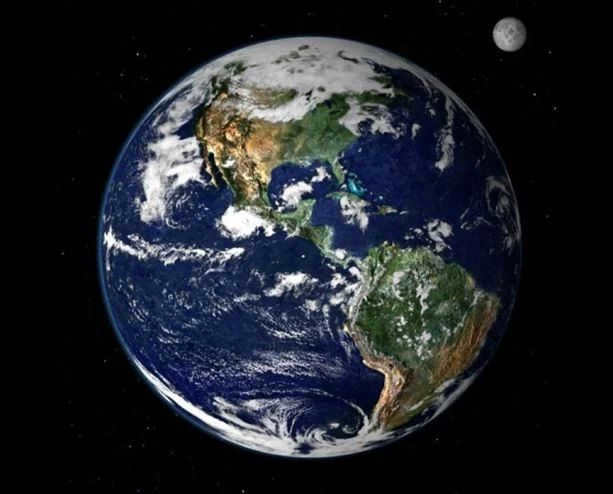
After extensive research, scientists have made a fascinating discovery regarding the Earth’s shape. It has been determined that our planet is an ellipsoid, with a slight flattening on both sides. This means that the equatorial radius is slightly larger than the polar radius. The highest points on Earth, Mount Huascaran and Chimborazo Volcano, are considered to be the farthest from the center of this remarkable globe.

The globe contains 6 continents and 5 oceans. The World Ocean covers 2/3 of the Earth’s surface, while the remaining 1/3 is land.
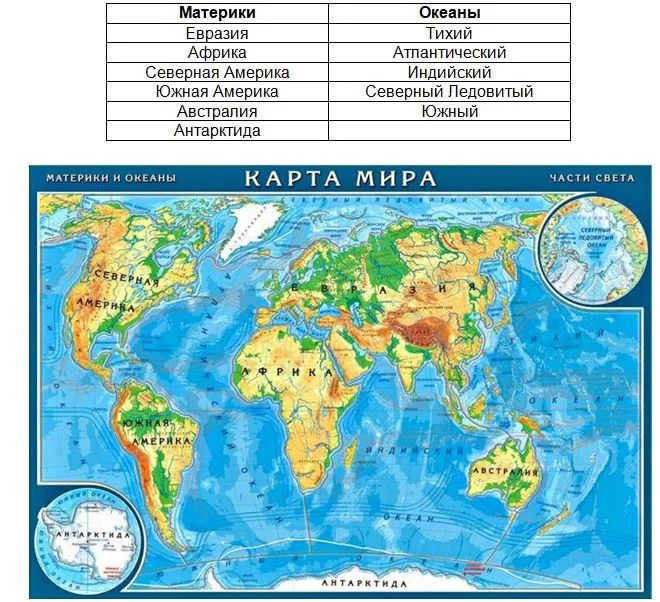
The Earth’s surface features are known as its relief, which has been shaped over thousands of years by both internal and external processes. Several key factors contribute to the formation of Earth’s landforms:
- Tectonic movements, which result in the creation of faults, folds, and volcanic eruptions;
- Weathering, where wind, water, and living organisms play a role in shaping the relief;
- Human activities.
The Earth’s relief changes at an incredibly slow pace, often taking millions of years. However, certain natural disasters can cause rapid transformations in small areas.
There are four primary types of relief found on Earth: mountains, plateaus, hills, and plains.
The Earth’s Structure
The Earth is composed of three main layers: the atmosphere, hydrosphere, and lithosphere.
The atmosphere is a protective layer of air that shields the planet from space debris. Most objects that enter the atmosphere burn up before reaching the Earth’s surface. The atmosphere is made up of various gases and its composition can be altered by human activities. It is divided into several layers:
- The troposphere is the lowest and most dense layer, with its upper boundary at 6-20 km. The width of this layer varies depending on temperature, with warmer temperatures resulting in a wider troposphere. When looking at the Earth’s structure in cross-section, you can observe that the troposphere is narrowest at the poles and widest at the equator. This layer is where all climate-forming processes occur, including the water cycle and the formation of cyclones and anticyclones.
Between the troposphere and the stratosphere lies a transitional layer known as the tropopause.
- The stratosphere is the layer where airplanes, including supersonic ones, fly. The air in this layer is less dense, and the temperature changes from -56 0 C to 0 0 C as you go higher. The upper boundary of the stratosphere is at 50 km. In 2005, scientists discovered traces of life in this layer. Some people believe that this supports the theory of life originating from space, while others think that it might be mutated bacteria from Earth.
The area between the stratosphere and the mesosphere is known as the stratopause.
- The existence of the ozone layer on planet Earth provides protection for humanity against harmful ultraviolet radiation. The ozone layer is formed through a series of reactions involving the oxygen produced by plants, which rises through the atmosphere. When this oxygen encounters ultraviolet radiation, it reacts to form ozone. Thus, the ozone layer not only shields the planet from UV rays, but is also created by their presence. Beyond the ozone layer lies the mesosphere, a region devoid of life. Rockets and jet airplanes traverse this region, which is the coldest place on Earth with temperatures reaching as low as -143°C. The boundary of the mesosphere extends up to 80 km.
The next transitional layer is known as the mesopause.
- The exosphere is the newest part of the atmosphere, extending up to 10,000 kilometers in height. This layer is home to meteorological satellites from around the world.
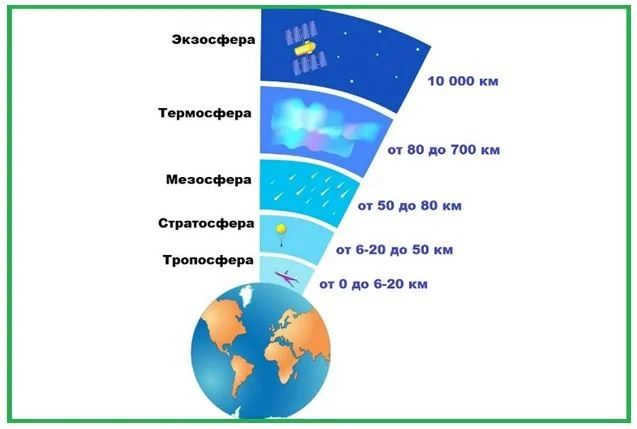
Source
The lithosphere, which is the solid outer layer of the Earth, is known as the lithosphere. It has a thickness that ranges from 5 to 90 km. The lithosphere is constantly forming, with most of the processes occurring at the ocean floor. This layer is composed of crystals that are formed from the solidification of magma.
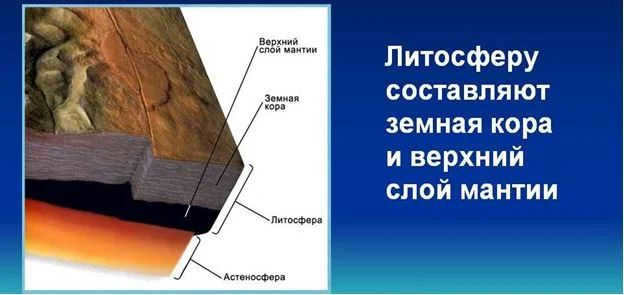

Source
The water envelope of the planet is known as the hydrosphere. It encompasses the oceans, surface water, groundwater, and atmospheric water.
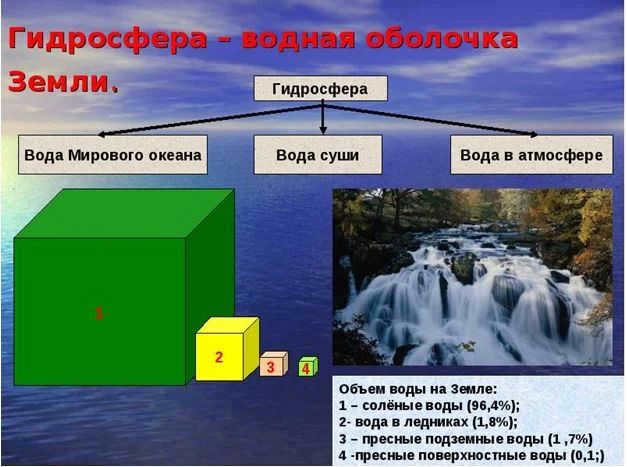
Source
The Earth’s composition is made up of various layers:
- The Earth’s crust, which can vary in thickness from 3-15 km beneath the oceans to 75 km on the continents. Compared to the planet’s overall volume, the crust is thinner than the skin of a peach.
- The mantle lies beneath the Earth’s crust and is often referred to as a “blanket” in Greek. Scientists believe that the upper part of the mantle is quite dense, while the lower part becomes more molten, forming magma at depths of 50-250 kilometers. It is estimated that magma moves at a rate of a few centimeters per year, with temperatures ranging from +2 to +5 thousand degrees Celsius.
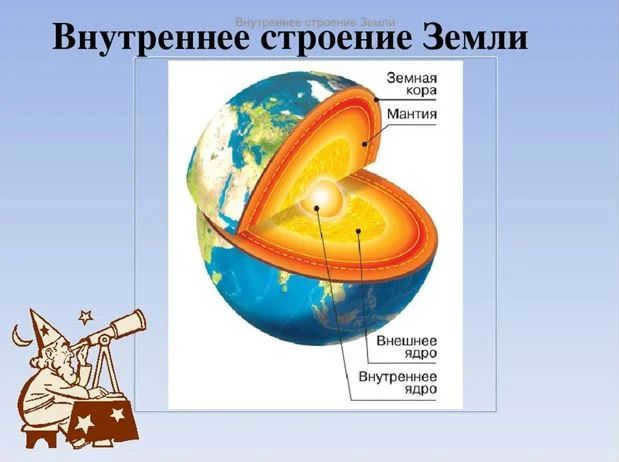
- The Earth’s climate is influenced by the greenhouse effect.
- The greenhouse effect has an impact on the Earth’s climate.
- How does the greenhouse effect affect the Earth’s climate?
- The Earth’s climate is affected by the greenhouse effect.
- The greenhouse effect has effects on the Earth’s climate.
Source
Effects of the greenhouse effect on the Earth’s climate
The Earth’s atmosphere has the ability to transmit the rays of the sun, and in doing so, it captures and retains heat radiation from the surface. These processes all contribute to the accumulation of heat. Human activity exacerbates the situation, as various gases and emissions are released into the atmosphere. All of this sets in motion the mechanism of the greenhouse effect. The concept of the greenhouse effect was first introduced in 1827 by J. Fourier, who wrote an entire article on the formation of the Earth’s climate. He also proposed that the optical properties of glass and the Earth’s atmosphere are similar. Shortly after, physicist Arrhenius conducted studies on the properties of water vapor and carbon dioxide, and concluded that their presence in the atmosphere can raise the temperature of the entire planet.
Greenhouse gases are responsible for the trapping of the Earth’s thermal radiation. These gases include:
- Carbon dioxide;
- Nitrous oxide;
- Methane;
- Hydrofluorocarbons;
- Sulfur hexafluoride;
- Perfluorocarbons;
- Freons;
- Nitrogen oxide.
Water vapor is another significant contributor to the greenhouse effect, further intensifying its impact. It results in increased humidity and temperature.
High concentrations of greenhouse gases disrupt the heat balance. Additionally, Freon and nitrogen oxide deplete and thin the ozone layer, leading to the formation of ozone holes. This causes an increase in ultraviolet radiation.
The greenhouse effect has several consequences:
- Changes in precipitation levels – some regions experience reduced rainfall frequency, while others suffer from heavy downpours;
- Rising sea levels worldwide – the melting of the Greenland and Antarctica ice caps will result in the inundation of large land areas;
- Ecosystem collapse – swift climate change will cause certain biological species to be unable to adapt quickly to new conditions, resulting in their extinction. The extinction of certain species will trigger a “domino effect” leading to the extinction of others.
Understanding the Terrain and Characteristics of the Moon
The Moon, Earth’s sole natural satellite, is situated at a distance of 384,467 kilometers from our planet.
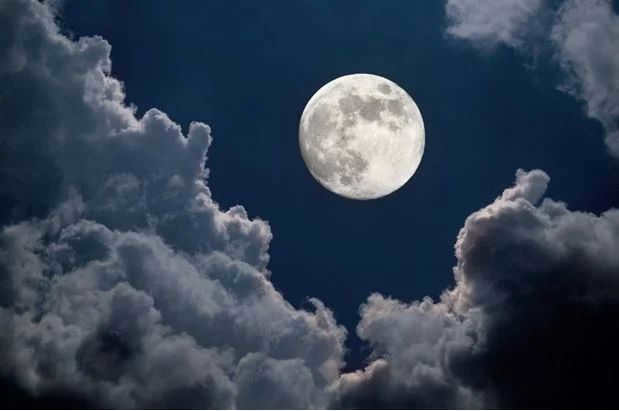
The composition of the Moon’s interior:
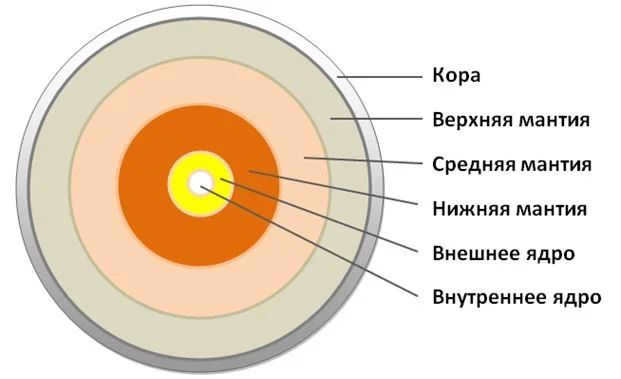

Source
The lunar satellite is coated with regolith, a combination of particles and small fragments created by meteors impacting the Moon. The depth of this coating ranges from a few centimeters to several meters.
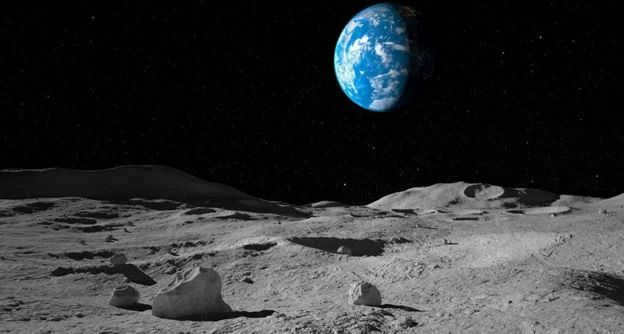
The lunar atmosphere is extremely thin, resulting in significant temperature variations. The thermometer on the dark side plummets to -173 0 C, while the illuminated side can heat up to +127 0 C. Rocks located one meter below the surface maintain a constant temperature of -35 0 C.
When observing the Moon from Earth with the naked eye, it may initially appear to have a flat, smooth surface. However, upon closer inspection with binoculars or a telescope, the observer quickly realizes this is not the case. The Moon’s terrain is quite fascinating, featuring mountains, valleys, ridges, and craters.
So far, all of the shaded regions on the lunar surface consist of relatively level landscape. These formations came into existence approximately 4 billion years ago during a period of intense geological activity. The dark hue of these areas is a result of cooled and solidified lava. The lighter regions on the Moon, where the lava did not reach, are referred to as continents. These landforms possess a considerable number of craters, most of which are billions of years old. In comparison, the seas exhibit a much smaller amount of craters, with the majority forming after these geographical features were submerged by lava. The oldest of these craters have remained permanently concealed beneath a thick layer of basalt.
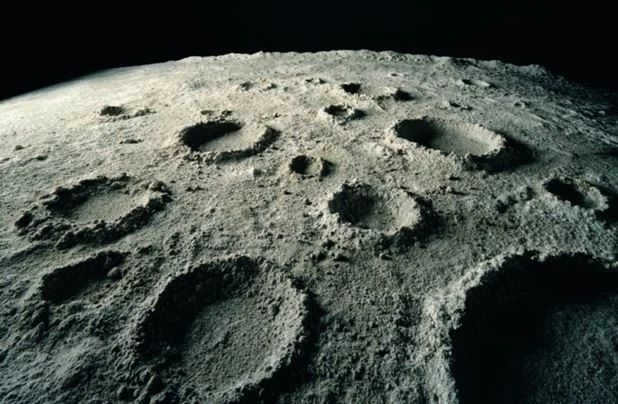
A multitude of craters were created due to the impact of massive meteorites. The collision results in the formation of a significant depression, from which rocks are expelled. These rock fragments then fall back to the surface, giving rise to smaller depressions known as secondary craters. These secondary craters can be found surrounding the primary crater. In total, there are over 1 million of these formations in the Moon’s topography.
The largest crater, Apollo, is situated on the far side of the satellite and spans 524 kilometers in diameter. It remains invisible from Earth. On the visible side, the largest crater is Bayi, with a diameter measuring 301 kilometers.
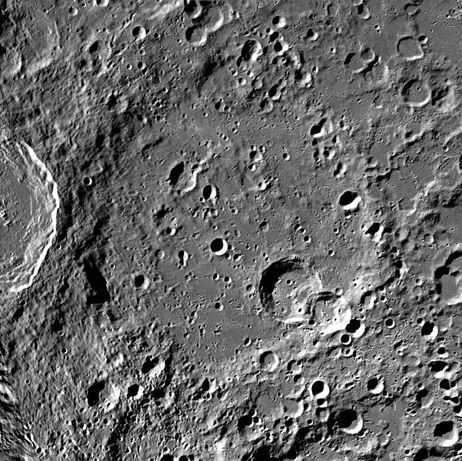
The Baiai crater
Mountain peaks and ridges play a significant role in shaping the surface of the Moon. While they bear a resemblance to their earthly counterparts, they lack glaciers, rivers, lakes, and vegetation. Instead, the Moon’s mountains consist of towering blocks of stone, reaching several kilometers in height. Among the most renowned are the Appenines, the Carpathians, the Caucasus, Altai, and the Alps, bearing the same names as their earthly counterparts. The highest peak on the Moon’s surface, Huygens Peak, stands at an impressive 5.5 kilometers.
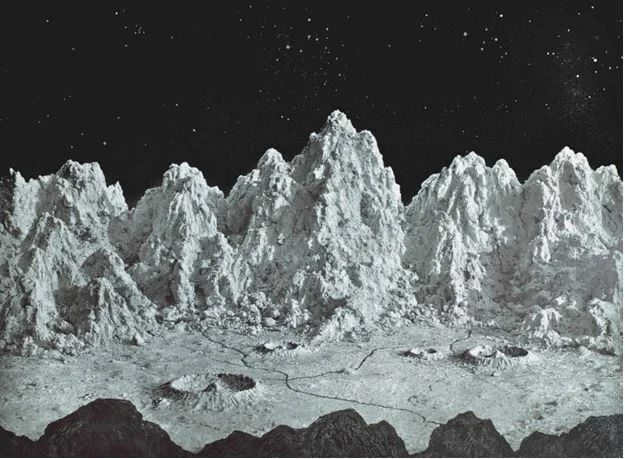

Furrows are another intriguing feature in the topography of the Moon. Upon observation, it appears as though a straight line has been drawn across the lunar surface, flattening everything in its path. Some furrows stretch for hundreds of kilometers in length, while their width remains relatively small. To this day, scientists have not been able to provide a scientific explanation for the formation of these captivating landforms.
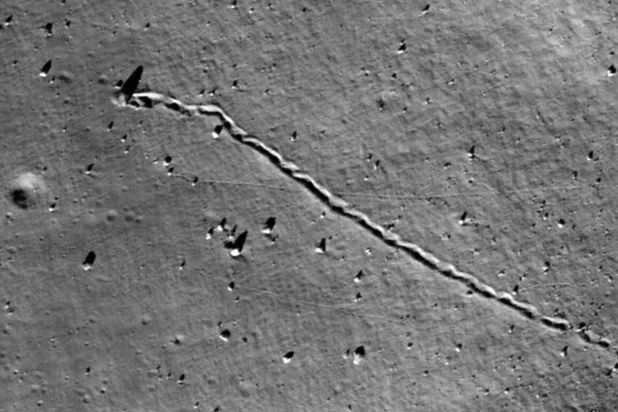
The Moon has several notable features, such as scarps, which occur when one part of the surface is lower than another. One of the well-known scarps is the Straight Wall, stretching for 120 km and towering at a height of 300 meters. This distinct feature can be observed from Earth approximately 7 days after the new moon, and during this time, it casts a shadow on the lunar surface.
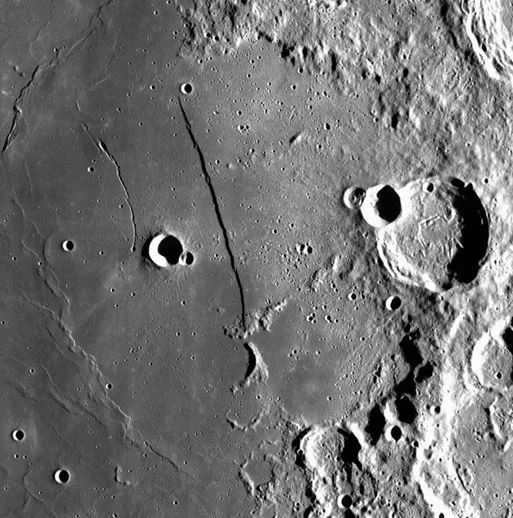
Spacecraft Exploration of the Moon
Exploration of the Moon by spacecraft commenced during the mid-20th century, marking the first time humans set foot on an extraterrestrial object. In 1959, the Luna-1 spacecraft from the USSR approached the Moon at a distance of 3725 km, leading to the discovery that the Moon lacks a magnetic field. That same year, Luna-2 successfully landed on the lunar surface, capturing images of several craters. However, it was not until the third mission that the first images of the lunar surface were obtained, although their quality was less than optimal.
In 1962, the initial American probe “Ranger-4” made a journey to the Moon, but sadly met its demise. A couple of years later, Ranger-7 was able to capture approximately 4,000 photographs of the lunar surface. Another two years passed before Luna-9 successfully touched down on the satellite. The images it captured were of superior quality. Simultaneously, American probes were dispatched into lunar orbit, allowing for 99% of the entire lunar surface to be documented. The first individuals to set foot on the moon were Neil Armstrong and Buzz Aldrin. This momentous occasion took place on July 20, 1969.
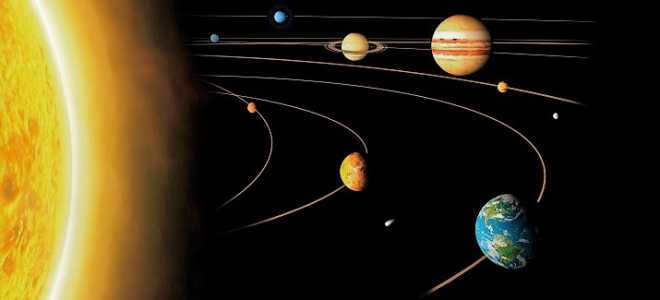
Undoubtedly, you are familiar with or at least have some knowledge of the planets that exist within our solar system. It is worth noting that our planet is a part of this system and has various interactions with other celestial bodies within its framework.
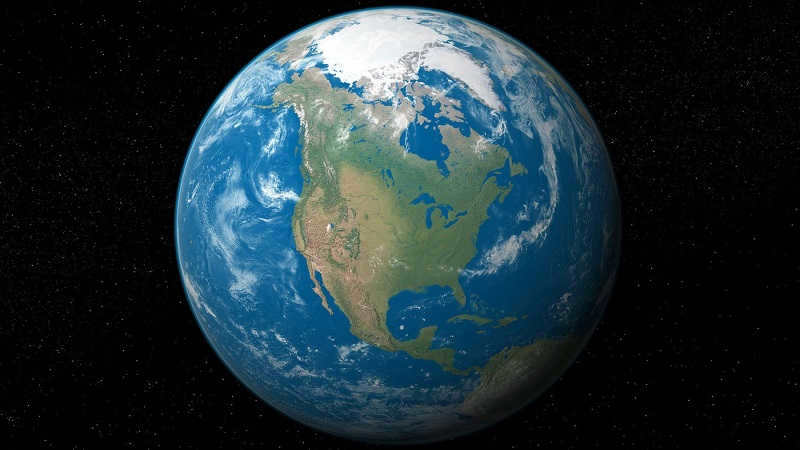
To begin with, in order to gain a better understanding, let’s examine the definitions.
Firstly, a planetary system refers to a system that consists of stars and various celestial objects (such as planets, their moons, asteroids, meteoroids, comets, and cosmic dust) that orbit around a shared center of mass.
Secondly, the Solar System is a planetary structure in which the Sun serves as the central body, around which other celestial objects are in orbit.
It is important to note that these objects can be categorized into three types: the Earth group, giant planets, and small-body regions.
How Many Planets are There in the Solar System?
According to astronomers, there are officially only eight planets orbiting around the Sun. They are categorized into two groups based on their characteristics: terrestrial planets and gas giants.
So, here are the names of the planets in the solar system:
- Mercury,
- Venus,
- Earth,
- Mars,
- Jupiter,
- Saturn,
- Uranus,
- Neptune.
Each planet has its own unique orbit and physical characteristics. There are no identical pairs in our cosmos. While there may be some similarities, there are no exact replicas.
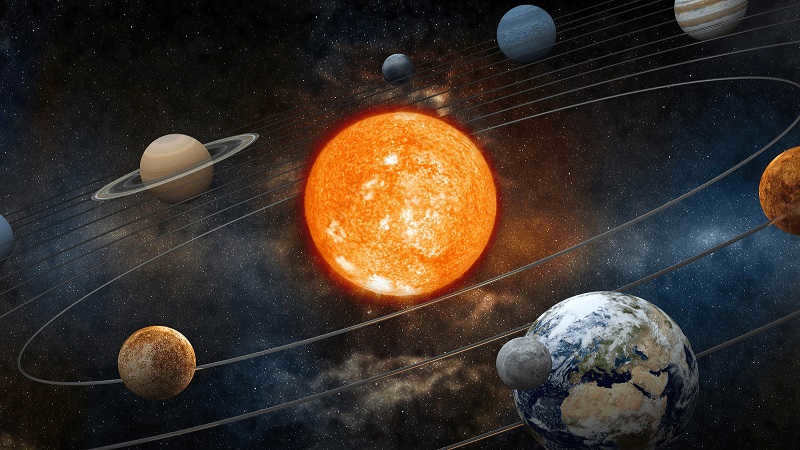
The Biggest Planet in Our Solar System
Indeed, the planets in our solar system vary greatly in size. The largest planet among them is Jupiter. Scientists estimate that this massive planet has a radius of around 70,000 kilometers, making its volume 1,321 times greater than that of Earth’s. However, despite its enormous size, Jupiter’s mass is only 318 times that of Earth. This is because Jupiter is predominantly composed of gases and has a low density.
When discussing the sizes of the planets in our solar system, it is worth mentioning the smallest one. Surprisingly, the closest planet to the Sun, Mercury, holds this title. Mercury has a radius of 2,439 kilometers, and its mass and volume are 18 times smaller than that of Earth.
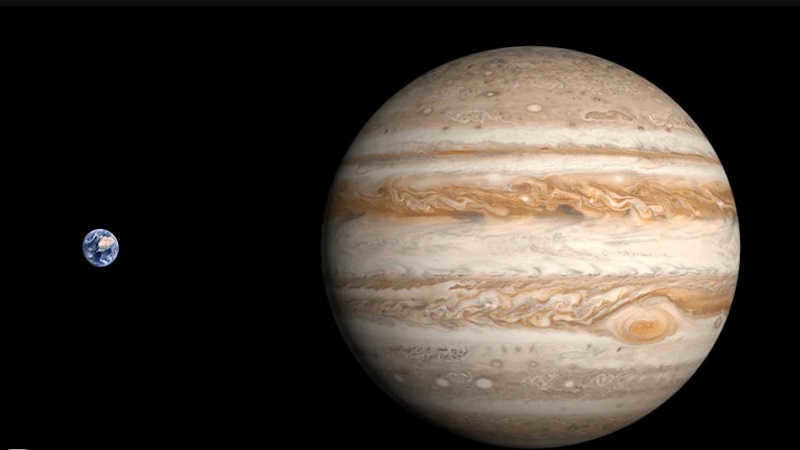
The Ninth Planet in the Solar System
It is intriguing to note that there was once a total of nine celestial bodies that comprised our stellar system. However, in 2006, Pluto was officially excluded from this roster due to the presence of other objects that are either equal to or larger in size. Consequently, in an effort to avoid including superfluous celestial entities within this classification, it was determined that Pluto should be classified as a dwarf planet.
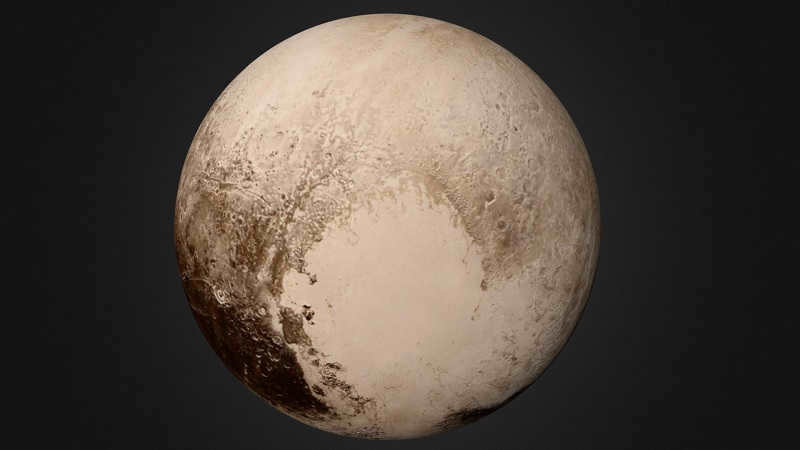
Today, we have acquired knowledge about the planets in our solar system and have become acquainted with their names. In my personal opinion, it is of utmost significance to possess an understanding of our position in relation to other entities within our vast universe. Despite the infinite and diverse array of celestial objects, humanity has managed to extensively explore the surroundings.
700 million years – that is the duration it took for our solar system to form. In the grand scheme of the Universe, this period of time is relatively short. Nevertheless, within this timeframe, all the crucial occurrences for our “solar family” took place. What are some of these events?
Once upon a time, a cloud appeared
The story began approximately 4.6 billion years ago. At that time, an enormous cloud of molecular dust peacefully drifted through the Milky Way. However, everything changed when a nearby supernova star erupted, causing a shockwave that coursed through the entire cloud. This shockwave initiated a gravitational collapse, resulting in the cloud shrinking. Additionally, the explosion of the massive star injected the cloud with gas and heavy elements like iron and uranium. These elements eventually served as the fundamental components for the formation of our solar system.
The compression happened at a high speed. Additionally, the cloud was in a state of rotation. It is a known fact that everything in our surroundings, including the galaxy, is constantly rotating. The rotation is a fundamental aspect of the physics behind stellar collapse. As gravity emerged within the gas-dust cloud, it not only caused it to spin faster, but also to flatten into a disk shape. Due to the rapid compression and chaotic rotation, the gas and dust within the cloud began to condense into numerous clumps. These clumps ultimately evolved into the future stars.
In due time, a portion of this cloud would transform into a fragmented solar system, with a luminous protostar at its core. This protostar would then proceed to absorb the dust and gas that constituted the solar nebula. The majority of this “debris” would end up in the Sun’s interior, while the remaining minuscule remnants would come together to form planets, satellites, asteroids, and even lifeforms like ourselves.
The solar system was not the sole offspring of a massive gas-dust cloud; simultaneously, other stellar systems were also brought into existence.
We can witness a similar phenomenon in the present day within the Orion constellation, where a colossal molecular cloud extends for hundreds of light years. In certain areas, we can observe the birth of young stars from these clusters, resembling enormous disco balls that radiate vibrant hues, illuminating the surrounding gas in a kaleidoscope of colors.
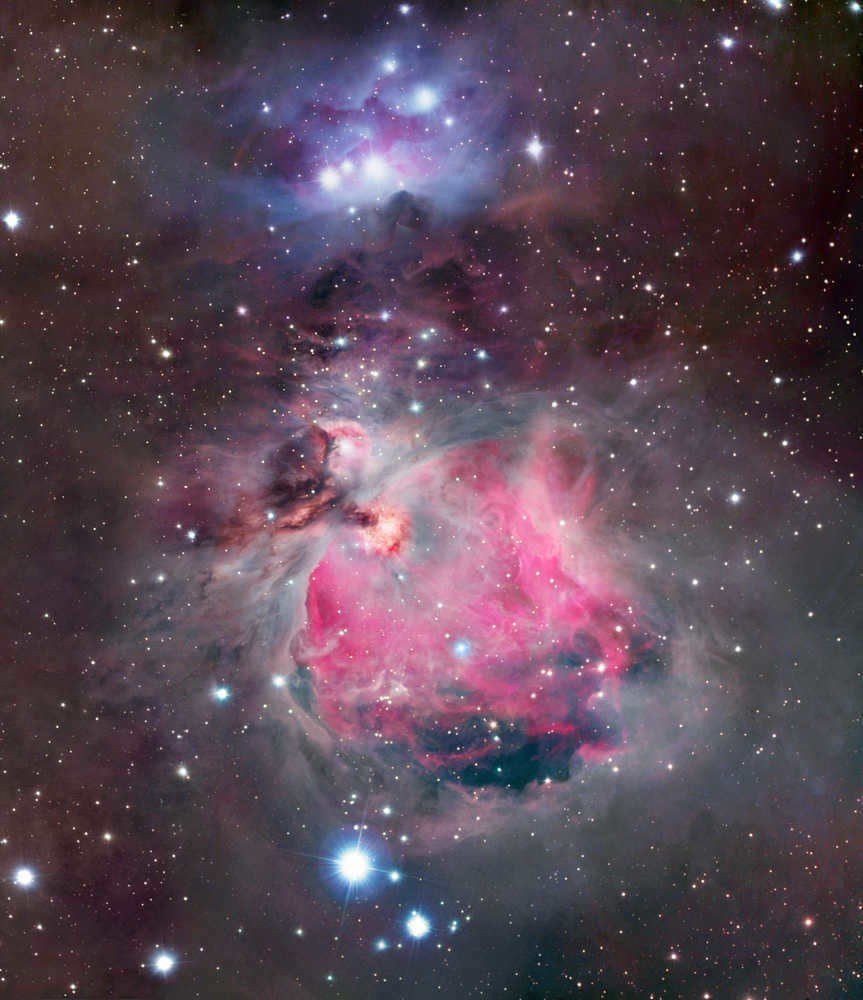
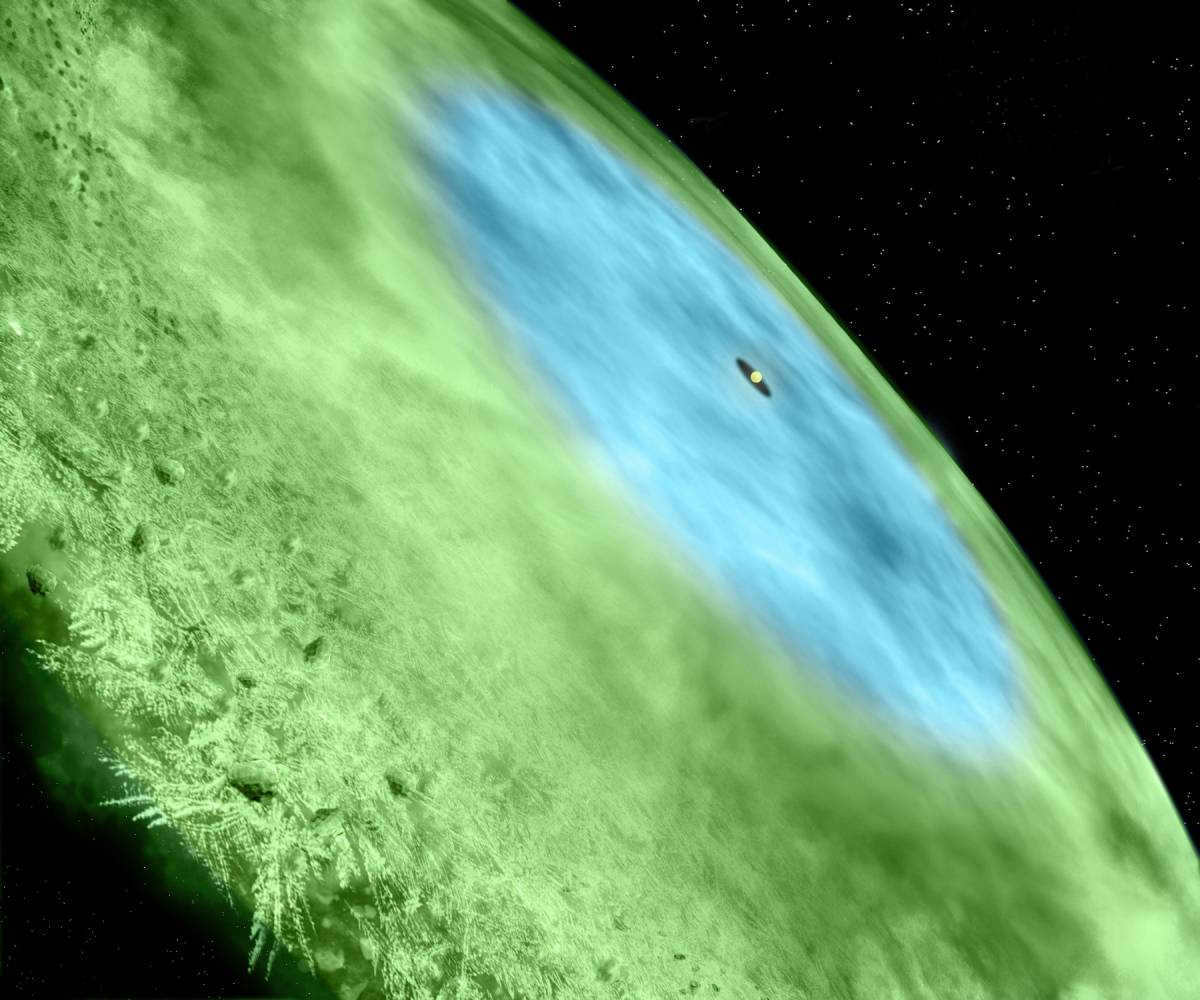
Gas giants
Meanwhile, protoplanets, which are comparable in size to the Moon, come together through collisions to create larger planets. The inner planets of the Solar System – Mercury, Venus, Earth, and Mars – are relatively small compared to their outer counterparts. This size difference is due to the limited availability of building material in their proximity to the star. The intense radiation prevents the condensation of gases such as water, ammonia, and others into solid matter, making it possible for only rocky planets to form. As a result, these inner planets have less mass as there is less material available for their formation.
The young frozen Jupiter emerges as the solar system’s giant after just 3 million years. Prior to transforming into a gas giant, Jupiter existed as a super-Earth, a massive rocky planet with a mass several times that of Earth. As it continued to grow, Jupiter attracted more protoplanets and became a “gravitational thief.” Similar to a cosmic vacuum cleaner, Jupiter absorbed all gases along its path, ultimately gaining 90% of its current mass in just 100,000 years.
Following its lead, the outer planets of the Solar System – Saturn, Uranus, and Neptune – also became “bullies.” While they may not have accumulated as much mass as Jupiter and Saturn, they managed to absorb 92% of all non-solar matter!
Because of the insatiable appetites of these two giants, the young solar system exhausted nearly all of its gas, including hydrogen and helium, causing Jupiter and Saturn to grow rapidly. However, their uncontrollable hunger actually benefited their more modest siblings. Without Jupiter and Saturn attracting all the gas and dust, we would only see our Sun as a dim and hazy disk. Without the presence of normal sunlight, life on Earth would likely not be as diverse and would not have produced fascinating creatures like Homo sapiens. The Sun itself played a role in this as well, as it continued to absorb hydrogen and helium, allowing it to grow in size and remain a protostar. Interestingly, Jupiter itself could have become a star if it had more mass.
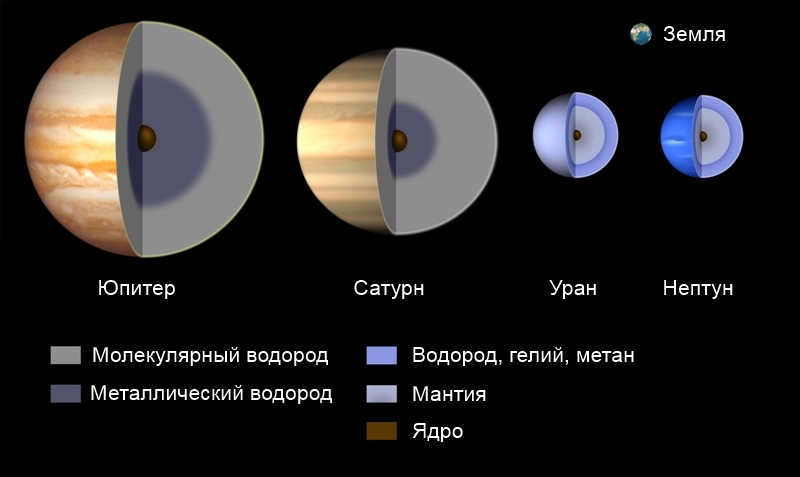
The Sun’s Rebirth
The Sun underwent a second birth. The star we have been discussing up until now was merely a proto-sun. In the early stages of its existence, its light spectrum differed. The proto-sun possessed immense energy, just like it does today, but it had a redder hue. At the age of 50 million years, a momentous event occurs within the solar system – our star reaches a critical temperature and pressure, triggering a nuclear reaction in its core. With the force of a hydrogen bomb, our proto-sun detonates, giving rise to a new, fully-fledged star.
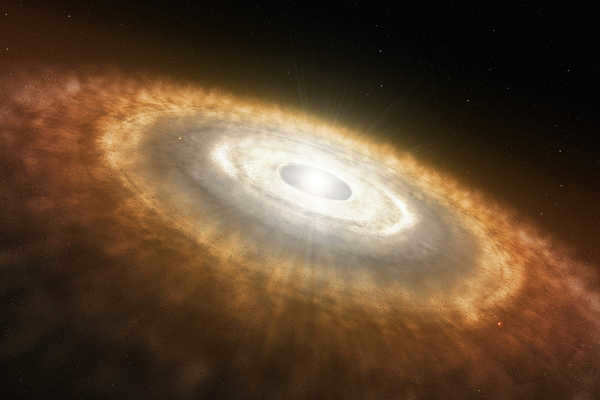
The terrestrial planets
As the Sun reached maturity, the larger gas giants like Jupiter, Saturn, Uranus, and Neptune moved away from the snow line. In the inner region, where there was an abundance of rocky material and less gas, chaos ensued as countless protoplanets collided and merged.
The formation of the terrestrial planets took ten times longer than that of the gas giants. It took 75 million years for this process to come to completion. The dust from these cosmic clashes has settled, revealing the distinct features of the four inner planets – Mercury, Venus, Earth, and Mars – as they emerged from the vast expanse of space.
The beginning of our planet’s existence was not an easy one. During its early stages, Earth had a companion called Theia, a protoplanet that followed a similar orbit. It was almost like a cosmic companion, always trailing behind Earth. It was inevitable that this close proximity would eventually lead to a collision between the two planets. This collision resulted in both destruction and creation – the debris from Theia and Earth came together to form the Moon (for more information, check out the previous issue of the magazine in the article titled “The Earth’s History in 30 Minutes”). Despite the cataclysm, Earth managed to survive and become one of the most stable planets in our solar system. This, along with other factors, is likely why Earth became the birthplace of such diverse life forms.
The asteroid belt and the Kuiper belt
It may appear that the process of planet formation is complete, but there exists a belt between Mars and Jupiter that continues to defy expectations. This belt, which should have coalesced into another planet long ago, remains unable to do so due to the interference of the giant planet Jupiter. The immense gravitational force of Jupiter constantly disrupts the trajectory of the asteroids, preventing them from coming together.
Further out in the Solar System, beyond the orbit of Neptune, lies another belt of asteroids known as the Kuiper Belt. This region is teeming with rocks and ice, yet they are so widely dispersed that they rarely collide with each other, making it impossible for them to form planets.
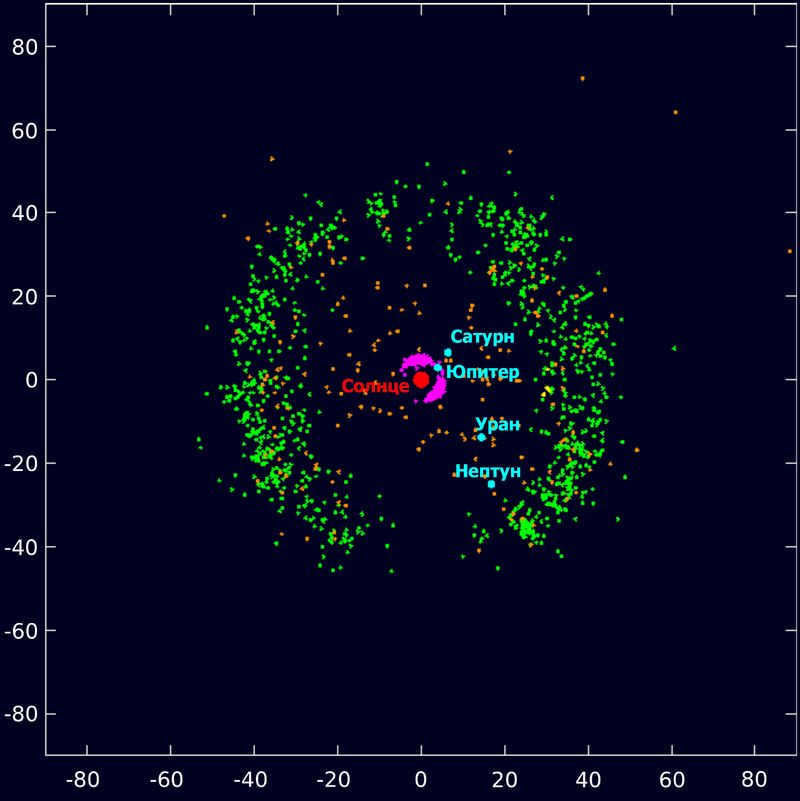
The Late Heavy Bombardment: A Crucial Event in the Evolution of the Inner Planets
Approximately fifty million years after the formation of the solar system, the Kuiper belt and asteroid ring contained a staggering number of celestial bodies, around 100 times more than what exists today. These bodies, though destructive, played a vital role in shaping the rocky inner planets, including our very own Earth.
The catalyst for this dramatic event was the gravitational influence of the gas giants. Their altered orbits had a near-catastrophic effect on the stability of the solar system. When Jupiter and Saturn entered a state of resonance, gravitational turmoil ensued, resulting in the scattering of planets throughout the system. Among the most affected were Neptune and Uranus, which experienced a complete switch in their orbital positions.
The Jupiter-Saturn resonance has significantly reduced the population of asteroids and Kuiper belt objects. Approximately 99% of these bodies have disintegrated, with most of them being ejected from the solar system. However, a few of them have moved towards the inner regions, posing a threat to planets like Earth. This phenomenon is commonly referred to as the late heavy bombardment. Interestingly, this destructive event has also played a beneficial role. It is believed by many scientists that these bombardments might have delivered water, organic minerals, and substances necessary for the emergence of life on Earth.
Since then, there have been no significant cataclysms observed in our solar system according to current scientific knowledge. This remarkable stability sets our solar system apart from other similar systems, leading many to question if we are truly unique.
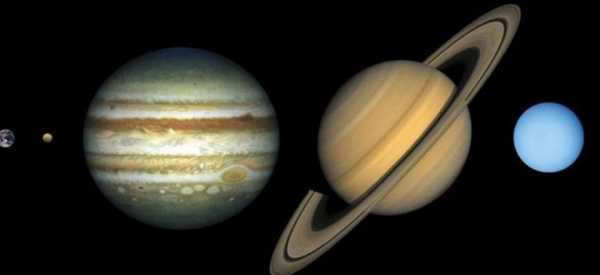
The solar system
What is the number of planets in the solar system? This was a question that could have been easily answered by any teenager not too long ago. It was nine, without a doubt. However, things have changed now. In 2006, scientists made the decision that Pluto does not meet the criteria to be classified as a planet. However, not everyone is in agreement with this. So, the question remains – are there eight or nine planets in the solar system? Let’s delve into this matter to find the answer.
The definitions of a planet, a dwarf planet, and a minor planet
In order to ascertain the number of planets in the solar system, whether it be 8 or 9, it is imperative to establish the specific criteria that categorize an object as a planet.
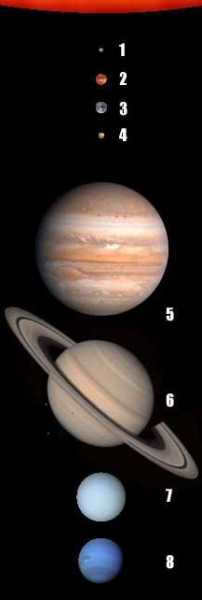
The planets in our solar system
The term “planet” originates from the ancient Greek word “wanderer”. In ancient times, they referred to these celestial bodies as “wandering stars”. Over time, the word has become more familiar, but it was only in 2006 that the International Astronomical Union (IAU) established a modern scientific definition for the term. According to the decision made by the scientists, a planet is a celestial object that possesses certain characteristics:
- It revolves around a star;
- It has a circular or nearly circular shape due to its own gravitational force;
- It has cleared its orbit of other celestial bodies or their particles.
Furthermore, it is important that a planet is not orbiting around another celestial body.
A celestial body is classified as a dwarf planet if it possesses sufficient mass to obtain a spherical shape due to its own gravitational force, but is incapable of removing all planetesimals (such as fragments of asteroids, chunks of ice, and debris) from its vicinity.
Minor planet, also known as small body, refers to objects of small size that move in their own orbit. This term is not official, as in 2006, the International Astronomical Union (IAU) introduced the term “small body of the solar system.” This category includes all celestial bodies that do not meet the definition of a planet or dwarf planet, and are not satellites of another object.
Since the introduction of these new definitions, debates regarding the number of planets in the solar system have not ceased. Not all scientists are satisfied with the classification proposed by the IAU. It appears that determining the exact number of planets in the solar system based on the latest data is not as straightforward as it may seem.
The Planetary Group of the Earth
In order to determine the total number of planets in our solar system, it is important to note that astronomers have categorized them into two distinct groups. The first group includes Earth, and the three nearest planets have been classified as part of the Earth group. These planets share several common characteristics:
- They possess a relatively weak magnetic field;
- They do not have a ring system;
- They have a similar internal structure, with a core at the center, surrounded by a mantle, and a crust on the outer layer (except for Mercury, where the crust has been partially destroyed by meteorites);
- They have a comparable chemical composition, with a high percentage of iron and silicates;
- They have few or no natural satellites.
Venus, the second planet in our solar system, was first observed through a telescope by Galileo Galilei. Its study was further advanced by Lomonosov. Today, it is well-known that Venus has an atmosphere that is completely inhospitable to life due to its high concentration of carbon dioxide and sulfur. The temperature on Venus can reach up to +475 degrees Celsius. The planet also has a very dense atmosphere, with thick layers of clouds creating a greenhouse effect. This density acts as a protective shield against meteor bombardment. Venus boasts an intriguing surface, featuring numerous craters, two distinct “continents,” and towering mountains. Interestingly, all of these geographical features are named after female figures, with the exception of the Maxwell Mountains, which were named in tribute to the renowned English physicist.
Mars, named after the Roman god of war, is characterized by its distinctive red color, which is attributed to iron oxide. Throughout history, there has been a persistent belief that Mars may harbor life, prompting the exploration of its potential habitability. However, the planet’s extreme cold temperatures make it inhospitable for life as we know it. In fact, the average temperature on Mars is significantly lower than that of Earth, with the hottest temperatures on the equator not exceeding +20 degrees and the coldest temperatures plummeting to -150 degrees. Additionally, the atmosphere on Mars is primarily composed of carbon dioxide, with a small amount of oxygen, and is highly rarefied. Water exists on Mars in a frozen state, and boiling occurs at a mere +2 degrees. The planet’s surface features include massive extinct volcanoes, extensive canyons, and caps of snow. Mars is also accompanied by two satellites, Phobos and Deimos, which are believed to be captured asteroids based on Greek mythology, where they are associated with Fear and Terror.
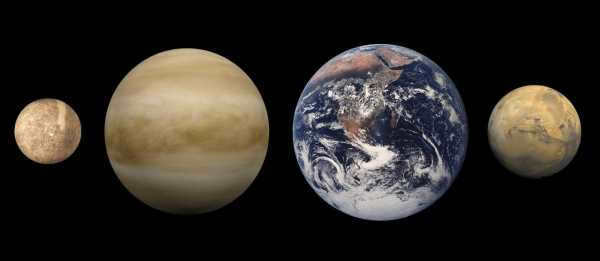
The planets that belong to the Earth group are Mercury, Venus, Earth, and Mars, arranged from left to right.
The immense planets
In addition to the aforementioned planets, the Solar System also consists of a group of massive planets known as gas giants. These gas giants are situated beyond the Kuiper asteroid belt and were recently joined by Pluto. The term “gas giants” is used because these planets are mainly composed of gas and ice.
Jupiter is the largest planet in our solar system. One of its most notable features is the Great Red Spot, a massive vortex that has been active for hundreds of years. Jupiter is known for its strong winds and intense thunderstorms, which are a result of its powerful atmosphere. Some people refer to Jupiter as a failed star because it lacks the mass needed to sustain a thermonuclear reaction. However, its mass is continuously increasing as it attracts dust, meteorites, and remnants of comets. There is even a possibility that a reaction has already started, as Jupiter emits more energy than it receives from the Sun.
Saturn is famous for its iconic rings. Similar to Jupiter, it is made up of hydrogen and helium, while its rings consist of various-sized ice chunks. Saturn boasts a total of 62 moons, with the most notable one being Titan, which is larger than the planet Mercury.
Uranus is categorized as an ice giant due to its predominantly icy interior. It holds the title for being the coldest planet, with temperatures plunging to -224 degrees. Interestingly, Uranus has a unique tilt in its axis, giving it the appearance of lying on its side. At one of its polar regions, the polar day lasts for a remarkable 42 years, while the opposite pole experiences a polar night of the same duration.
Neptune, the most distant planet from the Sun, holds the record for being the farthest planet in our solar system. Its presence was determined through theoretical calculations. Leverrier, a French scientist, proposed that the movement of Uranus is affected by a massive celestial body and made an approximate estimation of its position. Astronomers were able to observe Neptune for the very first time in 1846.
So, how many planets are there in our solar system? The answer is eight. However, not everyone agrees with this perspective. A disagreement within the scientific community emerged relatively recently in 2006 and remains unresolved to this day.
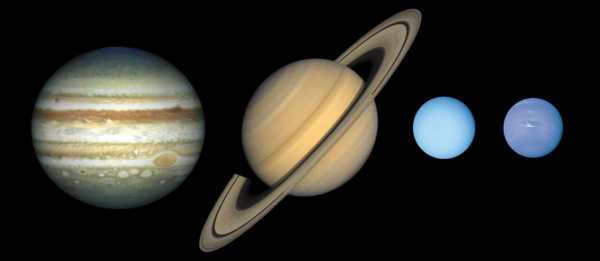
There are four giant planets in our solar system, namely Jupiter, Saturn, Uranus, and Neptune.
Controversy surrounding Pluto
The count of planets in the solar system has undergone several changes throughout history. Each time a new planet was discovered, the count increased. However, in a surprising turn of events in 2006, the count dropped from 9 to 8. Even after 12 years, the debate regarding the number of planets orbiting the Sun continues to this day.
Where did it all begin? Pluto was initially discovered in 1930 by the American explorer Tomb. Subsequent examination of images of the object revealed that it has a diameter of only 2300 km. Additionally, other celestial bodies were found in close proximity to Pluto, known as transneptunian objects, which refers to objects located further from the Sun than Neptune. Some of the most well-known transneptunian objects include Erida, Makemake, 2007 OR10, and Haumea, all of which are quite sizable. As a result of the International Astronomical Union’s (IAU) defined criteria for planets, Pluto no longer meets the requirements to be classified as a planet due to its orbit not being free from “celestial debris”.
There was not unanimous consent regarding the removal of Pluto’s esteemed and significant status as a planet. The dispute extended beyond the realm of science, as evidenced by the numerous protests held in support of Pluto. These demonstrations demonstrate that the public was deeply invested in the question of exactly how many planets exist within our solar system. In an attempt to provide solace, astronomers have introduced the term “plutoids” to describe all celestial bodies that share similarities with Pluto in terms of mass, location, and structure.
Furthermore, NASA has utilized data from the interplanetary space station “New Horizons” to investigate Pluto. “New Horizons” flew as close as possible to the disputed planet in 2015. The data revealed that Pluto possesses a fascinating geological structure, resembling icebergs and polar caps found on its surface. Additionally, Pluto has five satellites. Some planetologists argue that Pluto should regain its former status, as it differs significantly from transneptunian objects and its composition is more similar to that of planets.





